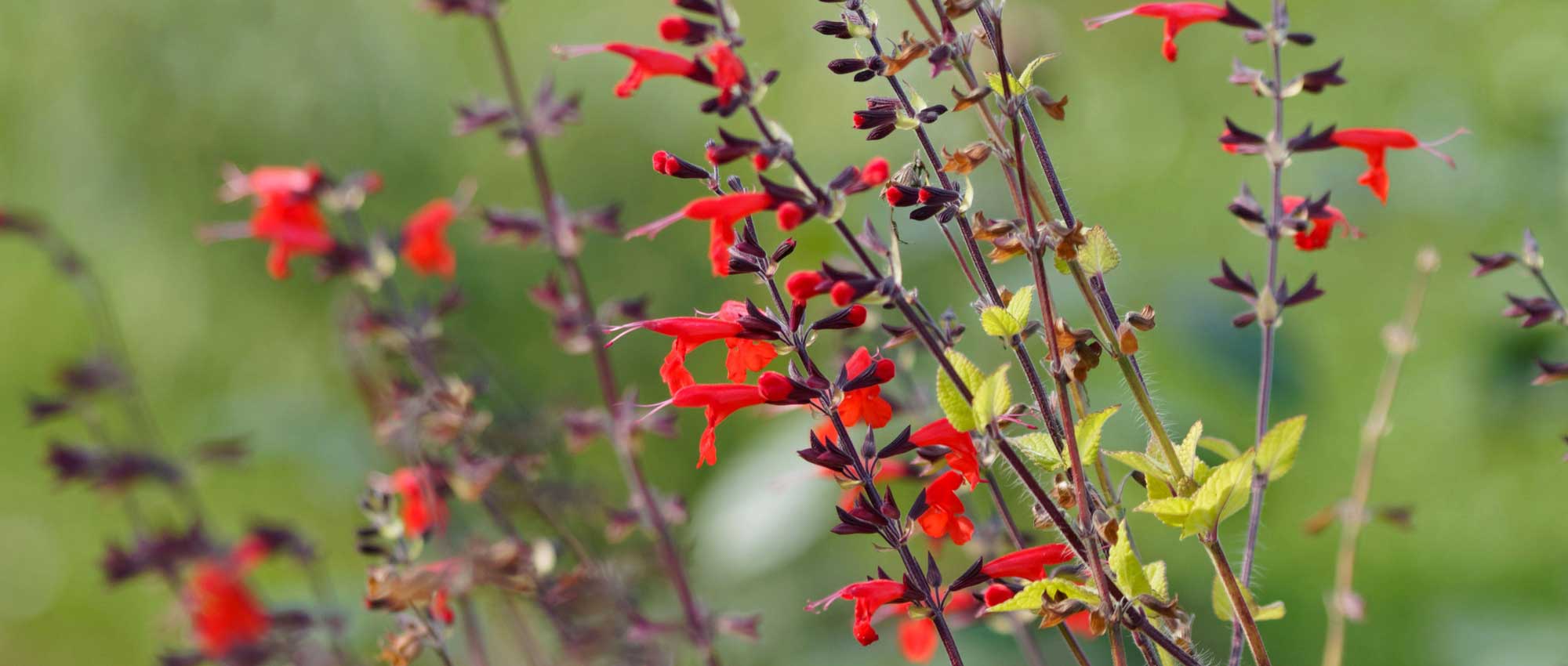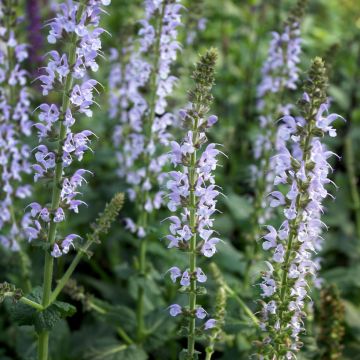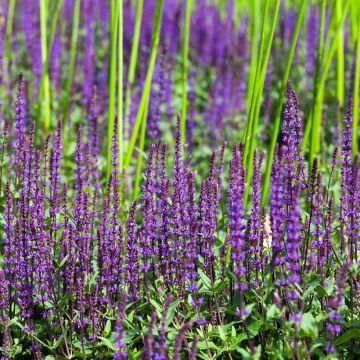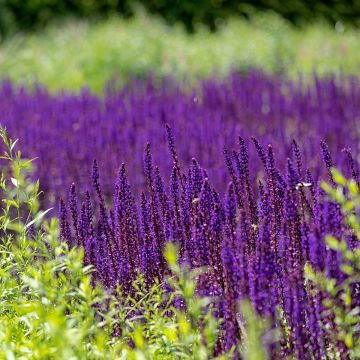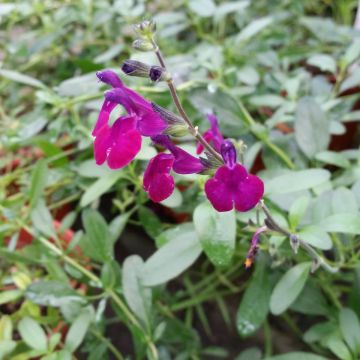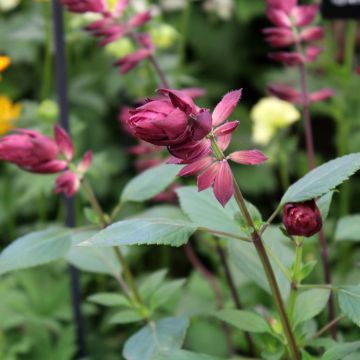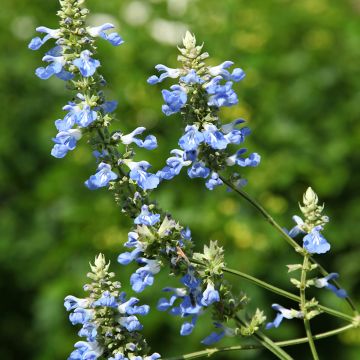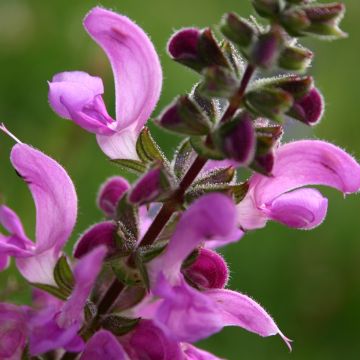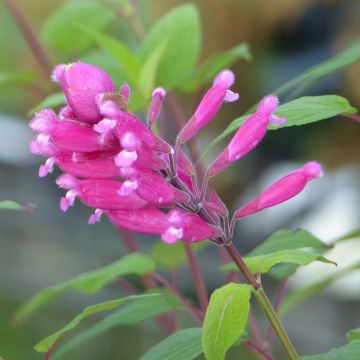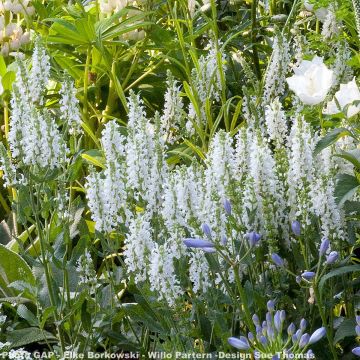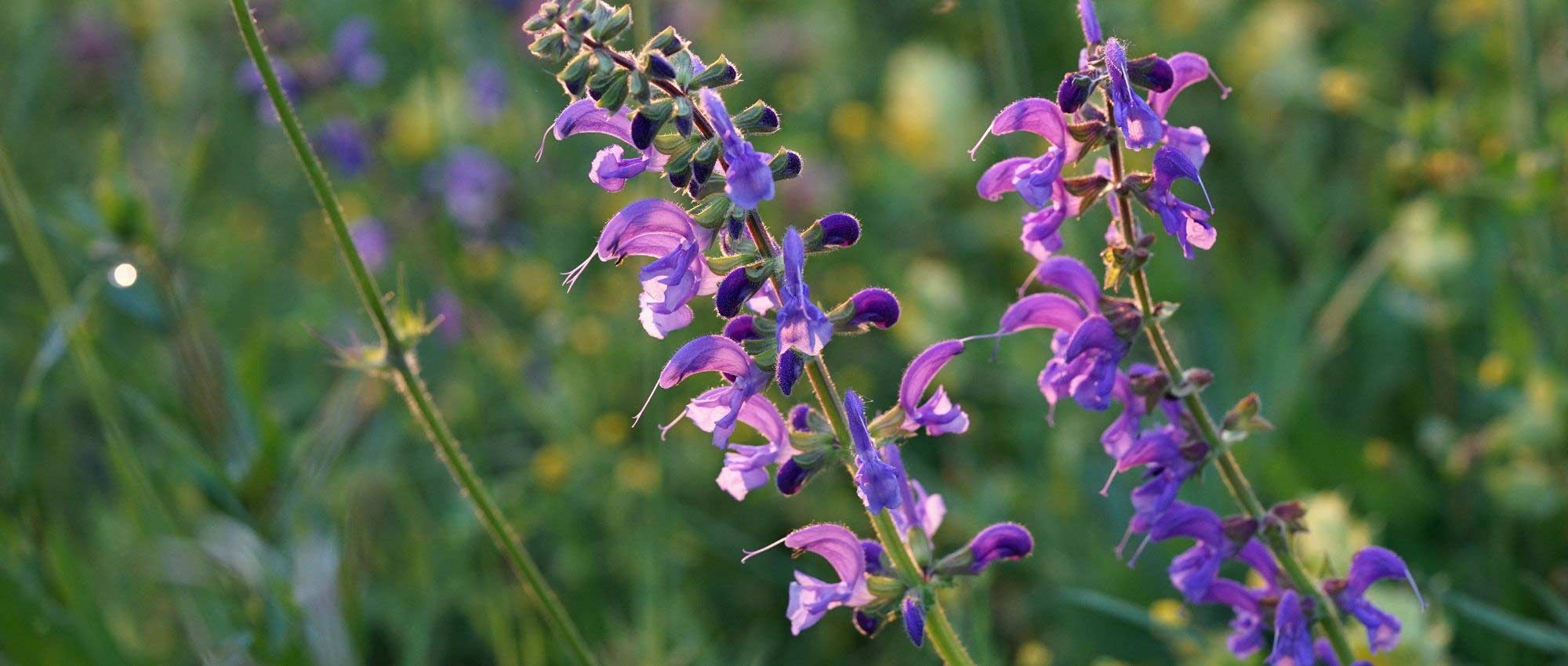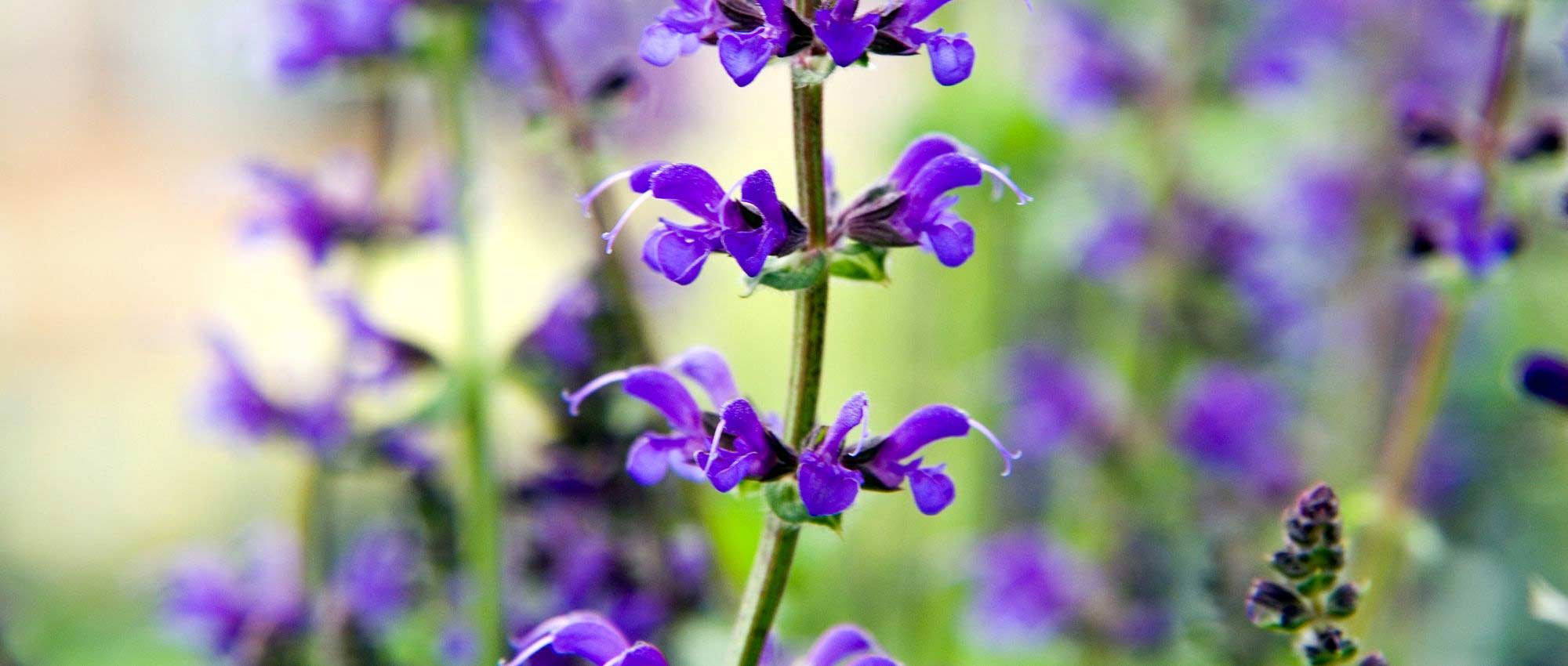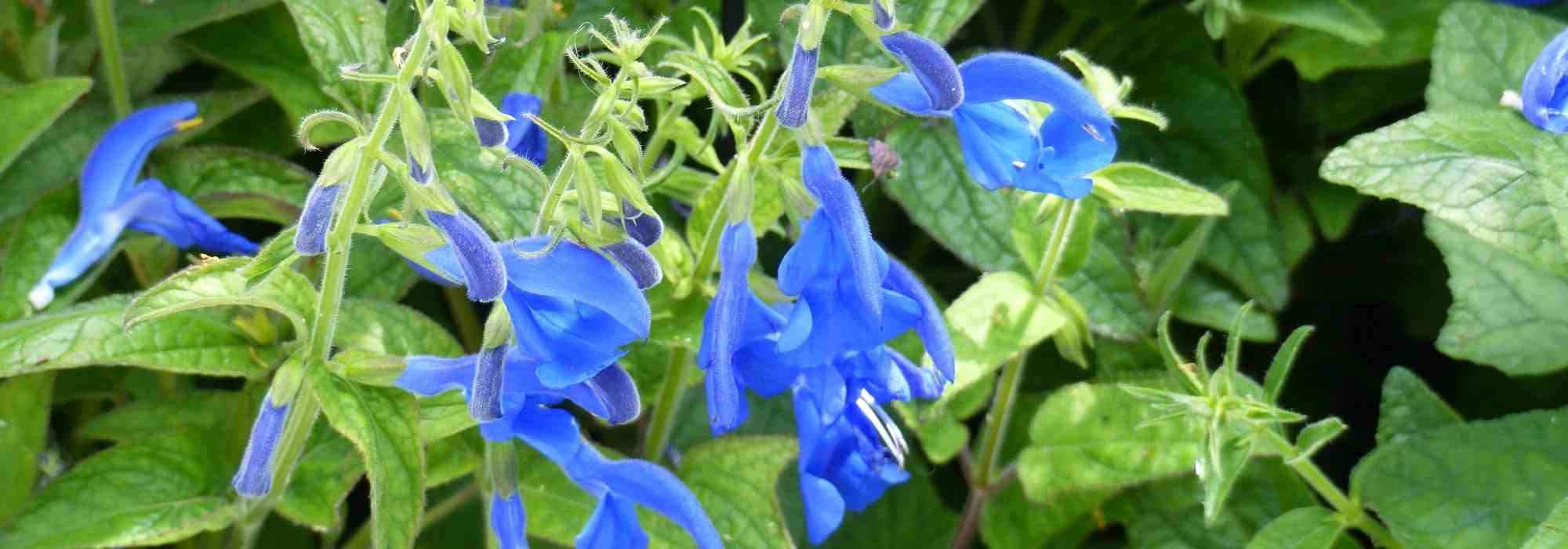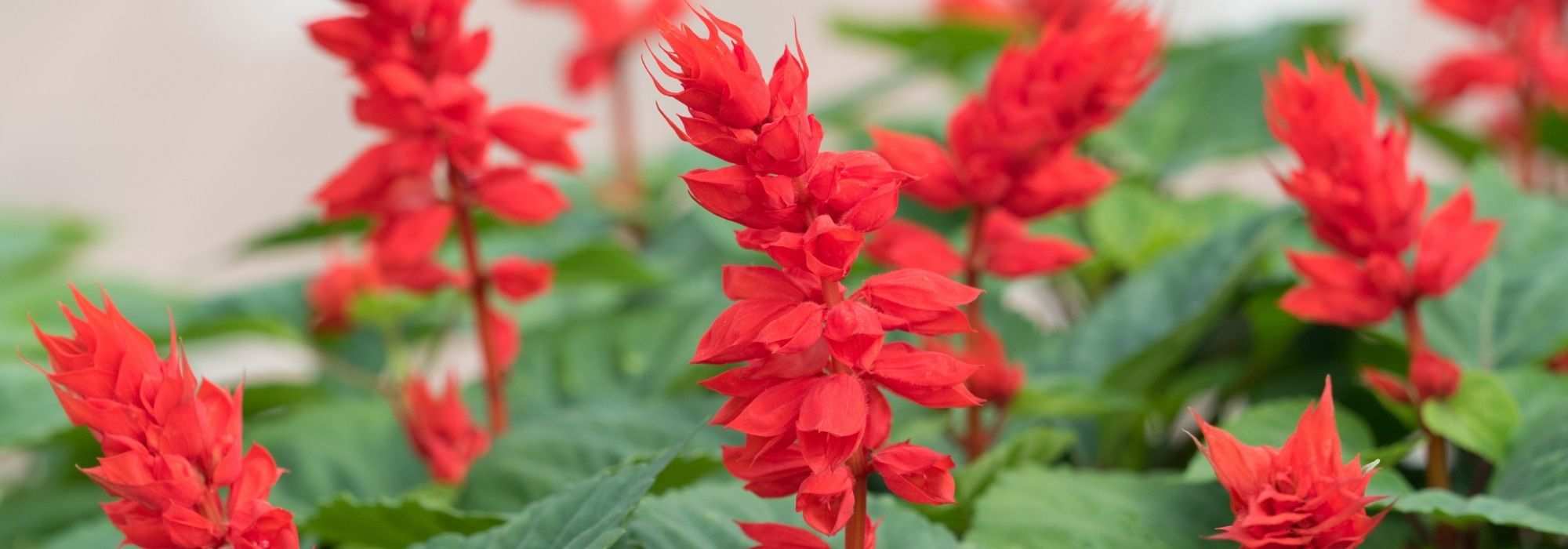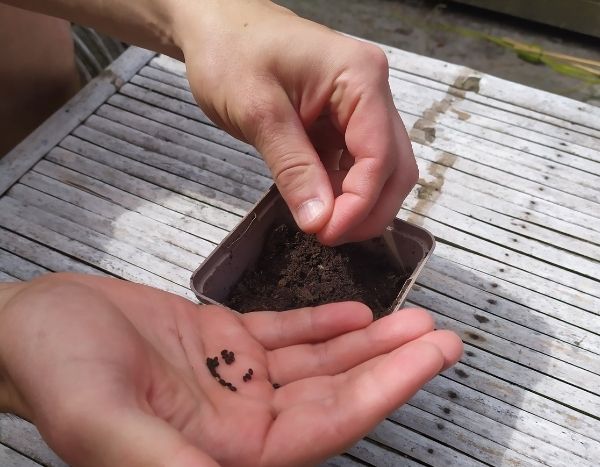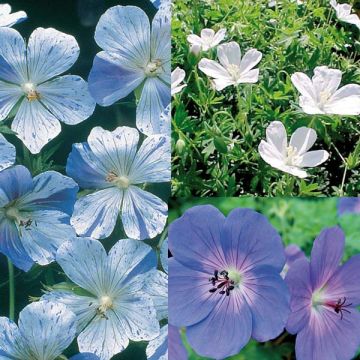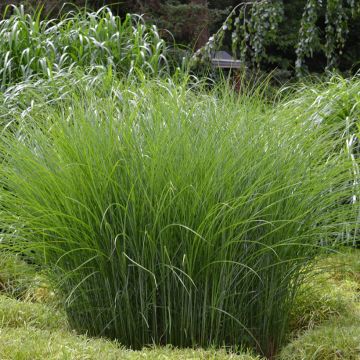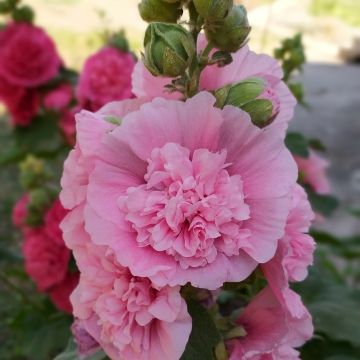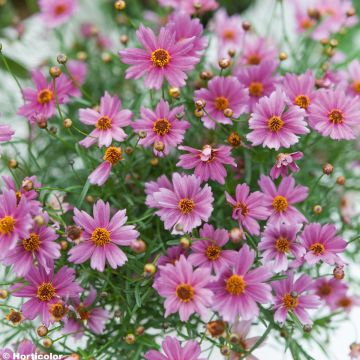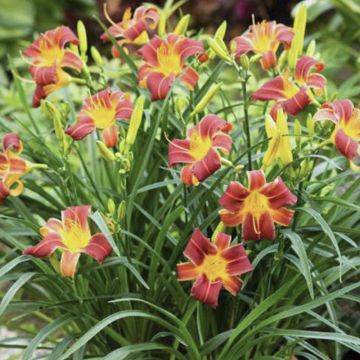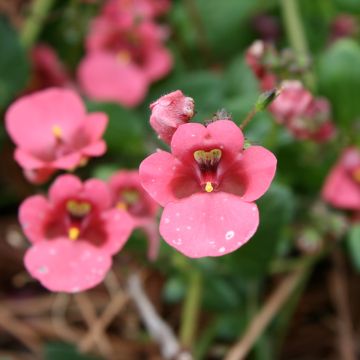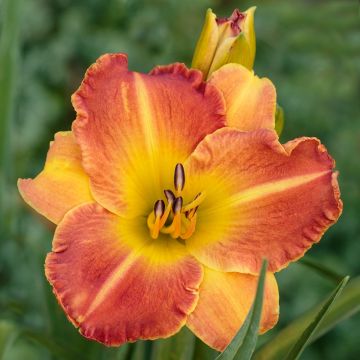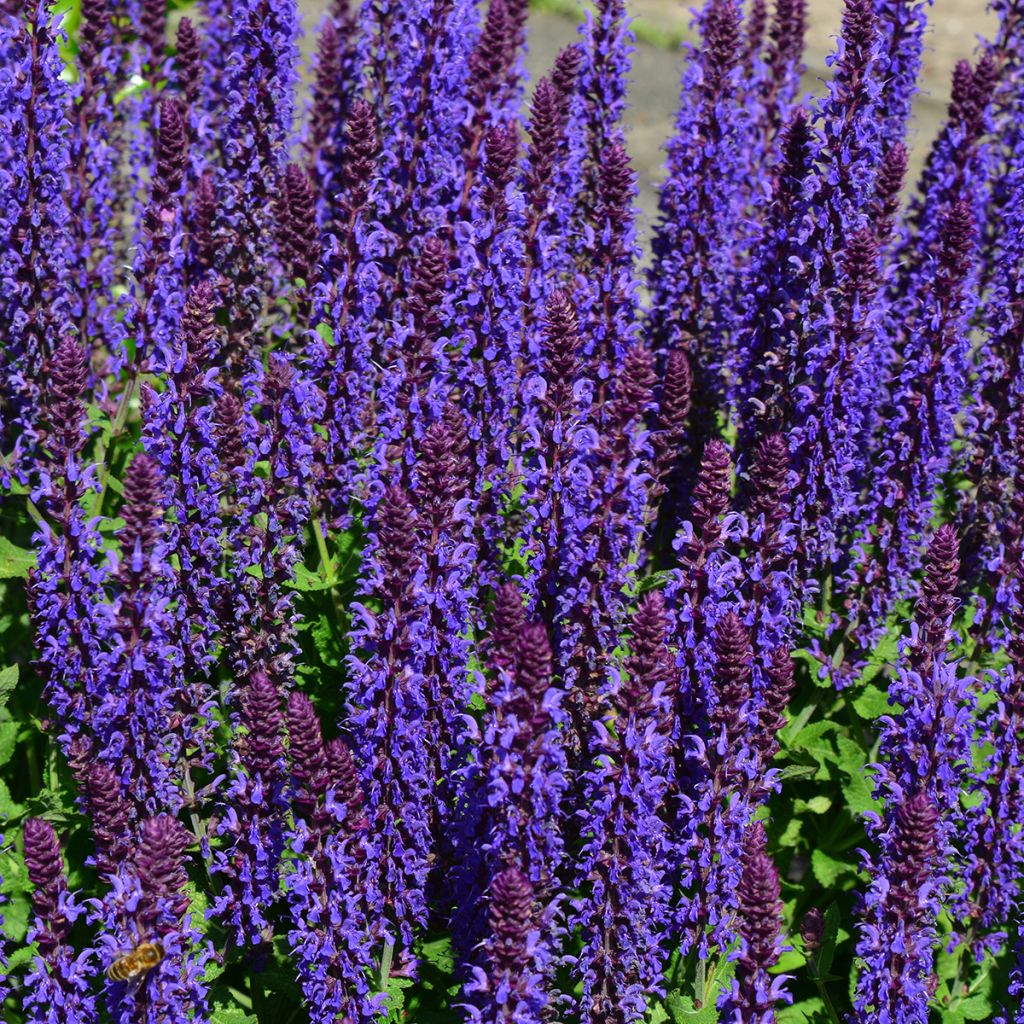

Salvia nemorosa Blue Bouquetta Alklf - Sauge des bois
View more pictures
Hide images
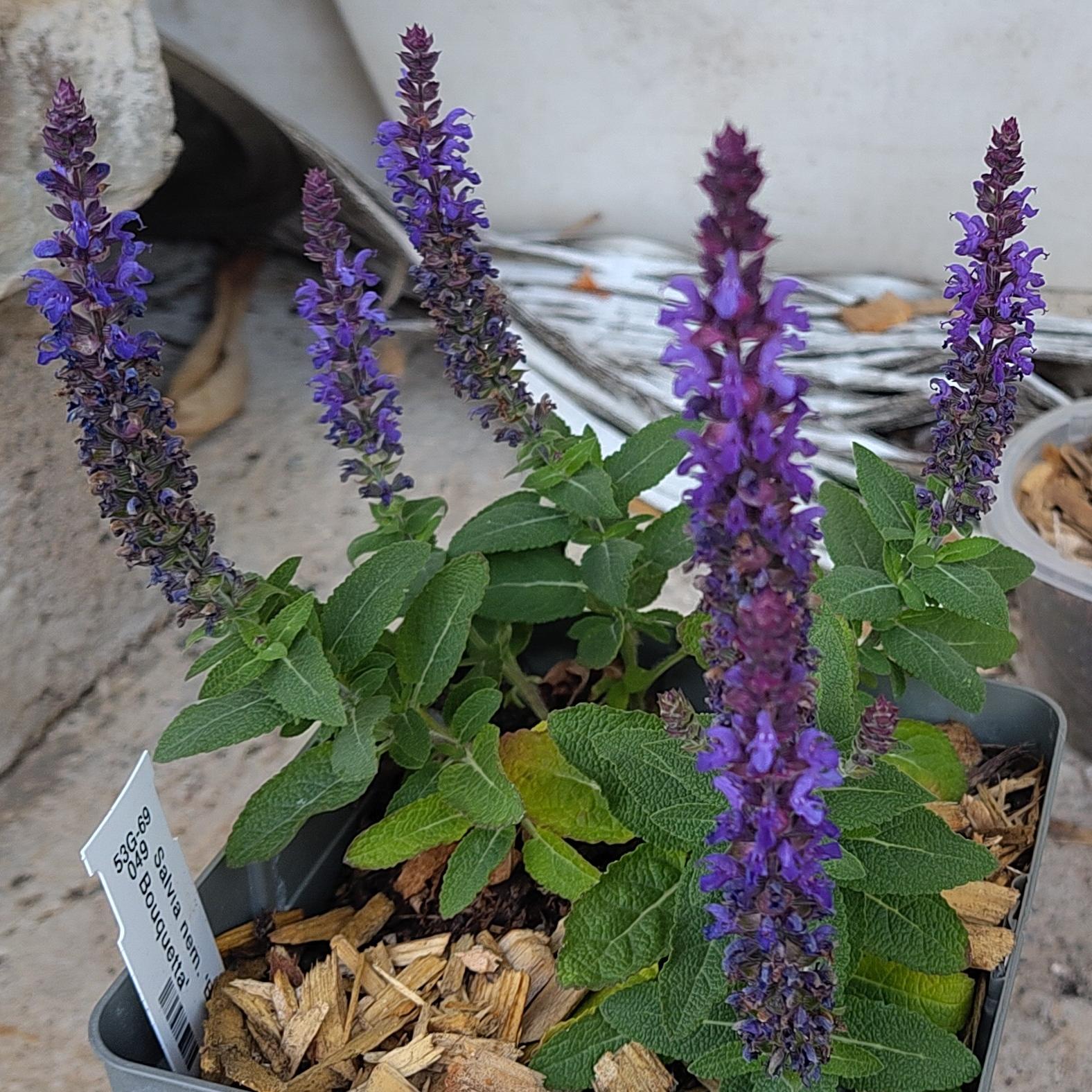
Emmanuelle P.

Beautiful sage
Emmanuelle P. • 20 FR
Salvia nemorosa Blue Bouquetta 'Alklf'
Salvia nemorosa Blue Bouquetta 'Alklf'
Woodland Sage, Balkan Clary
I am satisfied with the scabious, but much less so with the sage. It seems quite delicate to me. To be continued.
therese, 14/05/2023
Special offer!
Receive a €20 voucher for any order over €90 (excluding delivery costs, credit notes, and plastic-free options)!
1- Add your favorite plants to your cart.
2- Once you have reached €90, confirm your order (you can even choose the delivery date!).
3- As soon as your order is shipped, you will receive an email containing your voucher code, valid for 3 months (90 days).
Your voucher is unique and can only be used once, for any order with a minimum value of €20, excluding delivery costs.
Can be combined with other current offers, non-divisible and non-refundable.
Home or relay delivery (depending on size and destination)
Schedule delivery date,
and select date in basket
This plant carries a 12 months recovery warranty
More information
We guarantee the quality of our plants for a full growing cycle, and will replace at our expense any plant that fails to recover under normal climatic and planting conditions.
Would this plant suit my garden?
Set up your Plantfit profile →
Description
The Salvia nemorosa 'Blue Bouquetta' Alklf is a particularly compact perennial sage variety that is renowned for its remarkable flowering, both in terms of its duration and its vibrant purple-blue colour. This selection, like all woodland sages, is a very hardy and low-maintenance perennial. It is easy to combine in a border, where it will bring fabulous bursts of colour and a constant ballet of bees. And to appeal to gardeners without gardens, it also adapts very well to container cultivation.
The Salvia nemorosa 'Blue Bouquetta' is a hardy perennial plant from the Lamiaceae or Labiate family. Its wild ancestor, the woodland sage, is a species native to central Europe and western Asia. The 'Blue Bouquetta' cultivar forms a branching clump, with an adult size that does not exceed 30 cm in height when flowering and 40 cm (16in) in width. This perennial develops from a prostrate rosette composed of oval, rich, dark green leaves with toothed edges, which are aromatic when crushed. It has a bushy, low, highly branched and sturdy habit in summer. Flowering begins in May-June and continues until October if the soil does not dry out too much and faded flowers are regularly pruned. It takes the form of terminal clusters with numerous tiny purple flowers tightly packed against each other, surrounded by purple bracts. The beautiful flower spikes, rich in nectar, delight bees and butterflies. The rosette of this sage persists to some extent in winter. Its very cold-resistant stump does not fear harsh winters if the soil is properly drained.
Plant 'Blue Bouquetta' sage along the edge of a border in combination with carnations, coreopsis, or catmints, for example. It is an excellent candidate for ornamenting terraces and balconies, as well as being a privileged host for low-maintenance borders. Easy to grow, this plant is one of the hardiest sages and, as such, a fantastic garden perennial that does not disappoint. It withstands everything, even wind, cold, heat, and poor soils. This variety is particularly suitable for a romantic and natural garden, for example along a pathway, but it also easily blends with all types of flowering plants. It looks superb in the company of Lens landscaper roses, or the 'The Fairy' rose, with a red rose for a strong contrast (Rouge Cascade), or even with perennial geraniums. It also pairs well with shrubby lavateras, penstemons, and peonies.
With over 900 species of annuals, perennials, and soft-wooded shrubs distributed throughout the world, excluding very cold regions and tropical forests, the genus Salvia is the most diverse in the Lamiaceae family. The name Salvia, which dates back to Roman times, derives from the Latin salvus meaning 'healthy', alluding to the medicinal properties of common sage.
Salvia nemorosa Blue Bouquetta 'Alklf' in pictures
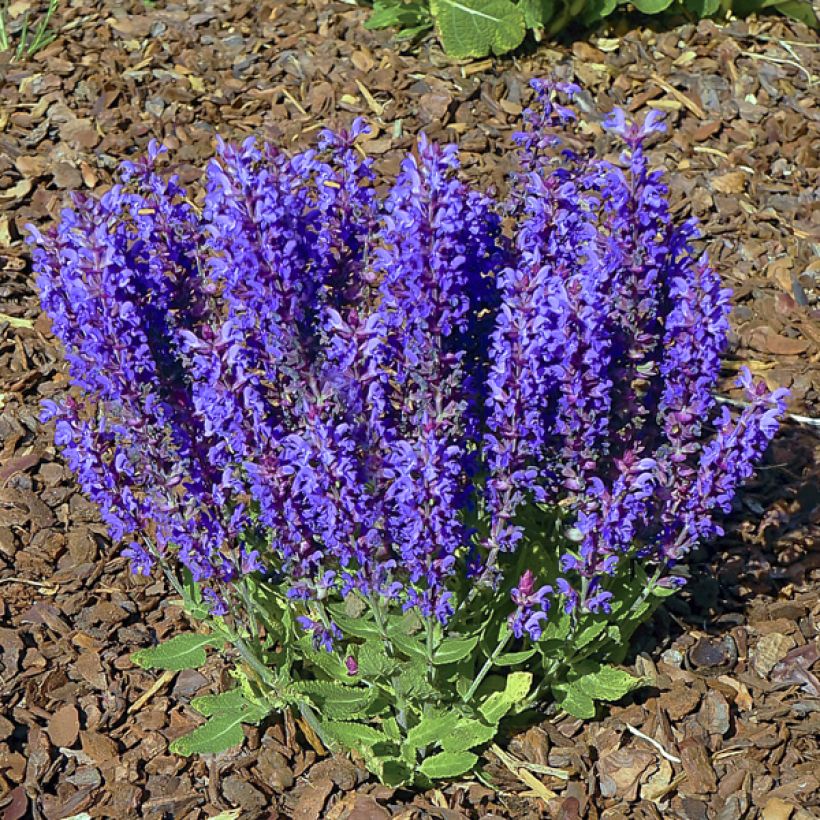

Flowering
Foliage
Plant habit
Botanical data
Salvia
nemorosa
Blue Bouquetta 'Alklf'
Lamiaceae
Woodland Sage, Balkan Clary
Cultivar or hybrid
Other Salvia - Sage
View all →Planting and care
Plant Salvia nemorosa 'Blue Bouquetta' in ordinary, even poor and rather calcareous, but above all well-drained soil. This plant tolerates some drought, but at the expense of flowering. It does not appreciate heavy, waterlogged soils in winter, which can harm its hardiness. Plant it in a sunny location. It is an easy plant, very floriferous. In spring, give it a little fertilizer and in April, prune all the branches in half. After flowering, cut the faded flower stems to stimulate and prolong flowering. To preserve the vitality of the sage, it is beneficial to divide the plant after three years. Plant the new plants in well-worked soil: to improve slightly poor soil, mix in a little horticultural compost. In humid regions, use a mineral mulch (gravel, volcanic rock, pebbles) with a thickness of 4 to 6 cm (2in) to drain the plant's collar.
Planting period
Intended location
Care
Planting & care advice
-
, onOrder confirmed
Reply from on Promesse de fleurs
Similar products
Haven't found what you were looking for?
Hardiness is the lowest winter temperature a plant can endure without suffering serious damage or even dying. However, hardiness is affected by location (a sheltered area, such as a patio), protection (winter cover) and soil type (hardiness is improved by well-drained soil).

Photo Sharing Terms & Conditions
In order to encourage gardeners to interact and share their experiences, Promesse de fleurs offers various media enabling content to be uploaded onto its Site - in particular via the ‘Photo sharing’ module.
The User agrees to refrain from:
- Posting any content that is illegal, prejudicial, insulting, racist, inciteful to hatred, revisionist, contrary to public decency, that infringes on privacy or on the privacy rights of third parties, in particular the publicity rights of persons and goods, intellectual property rights, or the right to privacy.
- Submitting content on behalf of a third party;
- Impersonate the identity of a third party and/or publish any personal information about a third party;
In general, the User undertakes to refrain from any unethical behaviour.
All Content (in particular text, comments, files, images, photos, videos, creative works, etc.), which may be subject to property or intellectual property rights, image or other private rights, shall remain the property of the User, subject to the limited rights granted by the terms of the licence granted by Promesse de fleurs as stated below. Users are at liberty to publish or not to publish such Content on the Site, notably via the ‘Photo Sharing’ facility, and accept that this Content shall be made public and freely accessible, notably on the Internet.
Users further acknowledge, undertake to have ,and guarantee that they hold all necessary rights and permissions to publish such material on the Site, in particular with regard to the legislation in force pertaining to any privacy, property, intellectual property, image, or contractual rights, or rights of any other nature. By publishing such Content on the Site, Users acknowledge accepting full liability as publishers of the Content within the meaning of the law, and grant Promesse de fleurs, free of charge, an inclusive, worldwide licence for the said Content for the entire duration of its publication, including all reproduction, representation, up/downloading, displaying, performing, transmission, and storage rights.
Users also grant permission for their name to be linked to the Content and accept that this link may not always be made available.
By engaging in posting material, Users consent to their Content becoming automatically accessible on the Internet, in particular on other sites and/or blogs and/or web pages of the Promesse de fleurs site, including in particular social pages and the Promesse de fleurs catalogue.
Users may secure the removal of entrusted content free of charge by issuing a simple request via our contact form.
The flowering period indicated on our website applies to countries and regions located in USDA zone 8 (France, the United Kingdom, Ireland, the Netherlands, etc.)
It will vary according to where you live:
- In zones 9 to 10 (Italy, Spain, Greece, etc.), flowering will occur about 2 to 4 weeks earlier.
- In zones 6 to 7 (Germany, Poland, Slovenia, and lower mountainous regions), flowering will be delayed by 2 to 3 weeks.
- In zone 5 (Central Europe, Scandinavia), blooming will be delayed by 3 to 5 weeks.
In temperate climates, pruning of spring-flowering shrubs (forsythia, spireas, etc.) should be done just after flowering.
Pruning of summer-flowering shrubs (Indian Lilac, Perovskia, etc.) can be done in winter or spring.
In cold regions as well as with frost-sensitive plants, avoid pruning too early when severe frosts may still occur.
The planting period indicated on our website applies to countries and regions located in USDA zone 8 (France, United Kingdom, Ireland, Netherlands).
It will vary according to where you live:
- In Mediterranean zones (Marseille, Madrid, Milan, etc.), autumn and winter are the best planting periods.
- In continental zones (Strasbourg, Munich, Vienna, etc.), delay planting by 2 to 3 weeks in spring and bring it forward by 2 to 4 weeks in autumn.
- In mountainous regions (the Alps, Pyrenees, Carpathians, etc.), it is best to plant in late spring (May-June) or late summer (August-September).
The harvesting period indicated on our website applies to countries and regions in USDA zone 8 (France, England, Ireland, the Netherlands).
In colder areas (Scandinavia, Poland, Austria...) fruit and vegetable harvests are likely to be delayed by 3-4 weeks.
In warmer areas (Italy, Spain, Greece, etc.), harvesting will probably take place earlier, depending on weather conditions.
The sowing periods indicated on our website apply to countries and regions within USDA Zone 8 (France, UK, Ireland, Netherlands).
In colder areas (Scandinavia, Poland, Austria...), delay any outdoor sowing by 3-4 weeks, or sow under glass.
In warmer climes (Italy, Spain, Greece, etc.), bring outdoor sowing forward by a few weeks.






























